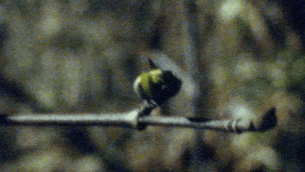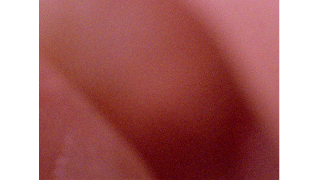I've wanted to write about my feelings on animation for a while, and my current project 'Frühlingssturm' (Spring-storm) has given me a fair bit to think about on the subject.
It is my first fully photographic animation, all others until now have been drawn - either on paper or on some form of software (Photoshop, After Effects, TV Paint). It is photographed using a Bolex in the single exposure mode, on Ektachrome 16mm 100D.
The original idea was to make some kind of abstract time-lapse, a Frankensteinian mix of flowers blossoming and leaves growing from winter into spring, but to capture the different stages of growth on different plants as opposed to one plant or one image over an extended period of time/ growth.
I wanted to see how the animation of the growth would combine with the chaotic movement of the image/ frame, to see if there would be a through-line or if it would all just fall apart because of a lack of cohesion.
I found a mix of both, at points the growth and movement are cohesive, but more often there are the points of chaos, where something else takes over - our perception.
Just as we are fooled by traditional animation into seeing movement (even though we are seeing rapidly changing still single images), we project movement into the abstracted images.
This de- and subsequent re-construction is the new route that this project took.
From having the working title 'Frühlingsfarben' (Spring colours), to it's current title 'Frühlingssturm' (Spring-storm).
Just as the image has been put together from disparate but similar images so too is the sound. In my workshop at uni I found a tin someone had cut out to make into a phenakistiskope with a record player. I knew I wanted to make a rhythmic soundscape, the tin allowed me to hit the slits at intervals with different materials; sticks, screws, leaves, baby's toys. Recording with a stereo microphone helped give it all some auditory space.
Like I said, I wanted to have a rhythmic sound, so as to help the image - if the movement is jagged then a jagged rhythm will help us accept it. Rhythm of any kind helps abstract animation a lot, watch any Norman McLaren and see us interpret the synchronicity which is only, or chiefly, given to it by the music (or course not in all of his animations, but in ones like 'Begone Dull Care' there is some synchronicity, maybe 10% or 20%, and the rest merely seems to be in sync).I particularly appreciate the random rhythm in that it gives the image support without, for lack of a better word, regulating it. In that I mean the sounds that are often found in animated films where foleys are used so intensely that they inform the content rather than supporting it, they can take over. It is something that has always bugged me, and I still don't quite know how to describe it - maybe it can simply be described as obvious and bad foley sound. Which in itself needn't be such a bad thing, if it weren't so present, so common, that it can seem almost canonical to animation.
Sound is important, but animation is about movement, the magic of seeing the static come alive, and I hope that there is some life in this film.
Frühlingssturm Full Film
















